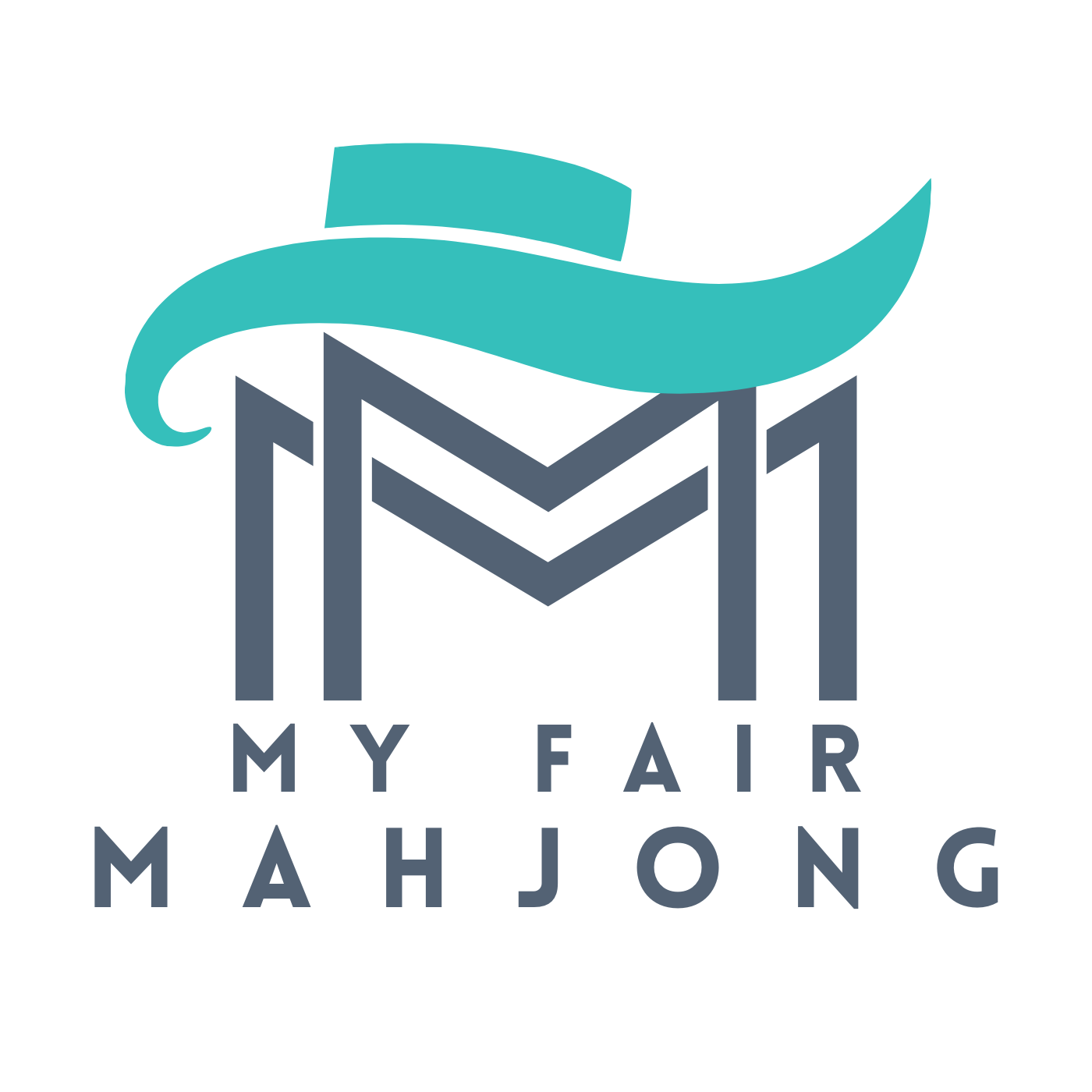As you delve deeper into the fascinating world of mahjong, you'll encounter a unique language filled with specific terms and terminology. Just like any game, understanding the vocabulary is essential to fully immerse yourself in the gameplay and communicate effectively with fellow players. In this blog post, we'll explore the essential mahjong terminology that every player, whether a beginner or a seasoned enthusiast, should know. By familiarizing yourself with these terms, you'll gain confidence, improve your gameplay, and deepen your connection with the rich traditions of mahjong.
I. Tiles and Sets:
- Bam (AKA Bamboo), Dot, and Crack (AKA Character or Crak) Tiles: Three main categories of mahjong tiles each have distinct symbols, each representing a specific numerical value. In modern American tiles, symbols range from traditional Chinese symbols to modern and artistic interpretations. Traditional Chinese sets tend to have symbol colors in red, blue, green and black ink, while modern American sets incorporate a wide-range of other colors in addition.
- Wind Tiles: North, South, East, West. Wind tiles often have imagery that reflects directional images creatively and include the direction word on the tile.
- Dragon Tiles: Dragon tiles associate with each of the three major suits. Red Dragon (Crack), Green Dragon (Bam), and White Dragon AKA "Soap" (Dot). Red and Green Dragons are often literal images of dragons or modern interpretations of them, while the White Dragon ("Soap") has imagery in the same of a rectangle outline.
- Flower Tiles: In American mahjong, flower tiles are used just like any Suit or Wind tile, in which they can be used as pairs or triplets to complete your hand. In the Chinese version of the game, flower tiles are culturally meaningful and associate with the seasons of the year.
- Joker Tiles: A special tile in American Mahjong that can be used as a "wild tile" to be a substitute for any other tile to complete a set (but can't be used in pairs!). It is often depicted with a colorful design that represents a range of imagery from luck and good fortune to funny imagery holding with traditional Jester concepts. They typically have the word "Joker" on the tiles.
- Blanks: In traditional Chinese Mahjongg, blank tiles were often representative of the White Dragon, and often sets included extra blanks in case a tile was lost. In modern American Mahjong, many sets include blank tiles that may be used in a free-exchange at any time during play to allow the player to pick up a needed tile among the discards.
- Pair, Pung, Kong, Quint and Chow: Pair, Pung, Kong and Quint represent a set of 2, 3, 4, 5, respectively, are identical tiles of the same suit and number. A chow is a sequence of three tiles in the same suit).
- Mahjong Hand: A complete mahjong hand includes specific combinations of Pairs, Pungs, Kongs, Quints, Chows or arrangements and in American Mahjong, hands often follow the National Mah Jongg League (NMHL) Official Standard Hands and Rules Card. The NMHL produces a new card each year. There are also novelty and specialty creative cards that you can find to change up the game.
- Deal and Discard: Dealing happens to start the game with the dealer passing out tiles. Discards occur with each play as a player picks up new tiles, and discards to maintain the 13 tiles in her rack at all times.
- Calling or Pausing: Players can pause play and call a tile discarded by others to complete sets in their hand such as a Pung, Kong, Quint.
- Riichi: Explore the riichi declaration, a strategic move that involves committing to a winning hand by sacrificing the ability to change the tiles in your hand.
This is just the tip of the iceberg. Traditional Mah Jongg has been played for centuries, and versions of it have spread and evolved throughout the world. By familiarizing yourself with the essential mahjong terminology covered in this article, you're equipping yourself with the language of the game and enhancing your overall mahjong experience. Understanding the tiles, sets, patterns, scoring, and game mechanics will not only boost your confidence but also enable you to communicate effectively with other players, whether you're learning, teaching, or competing. So, embrace the terminology, dive into the captivating world of mahjong, and let the language of the game connect you with a vibrant community of players worldwide. Happy playing and may the tiles be in your favor!

